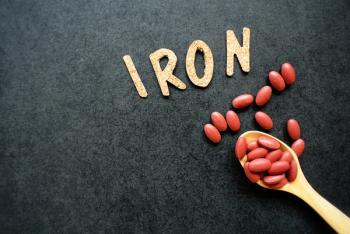
Cover Story: Should your patients be on extended-use OCs?
Women treated with OCs for menstrual disorders like dysmenorrhea and irregular bleeding may not want to put up with the withdrawal symptoms linked with the standard regimen's 7-day hormone-free interval. Extending active therapy and reducing hormone-free days can improve their quality of life.
Cover Story
Should your patient be on extended-use OCs?
By Patricia J. Sulak, MD
Women treated with OCs for menstrual disorders like dysmenorrhea and irregular bleeding may not want to put up with the withdrawal symptoms linked with the standard regimen's 7-day hormone-free interval. Extending active therapy and reducing hormone-free days can improve their quality of life.
Women had far fewer periods before they gained widespread access to contraception-and fewer gynecologic disorders, too. In fact, the number of menstrual periods a modern woman experiences over a lifetime has risen dramatically-nearly threefold since the pre-Pill era. Women used to have an estimated 40 to 160 menstrual periods over a lifetime compared to a modern woman's average of 450. There are many reasons for the greater number of lifetime menstrual cycles. For one thing, the average age of onset of menarche has been drifting downward, reaching 12.6 years in 1995. And then there's the later onset of menopause, delayed childbearing, fewer pregnancies, and decreased incidence and duration of breastfeeding.1,2 While having consecutive years of monthly menstruation may appear "normal" to the modern woman, is it truly "natural"?
My goal is to review the health-related disorders associated with menstrual cycles and the economic toll they take on the individual and society. We'll then look at the role of oral contraceptives, which are commonly prescribed for "off label" treatment of these menstrual disorders. Finally, I'll discuss the effectiveness of replacing a standard OC regimen with extended OCs to treat or eliminate symptoms like headache and heavy bleeding.
Menstrual and hormone-related disorders
Menstrual disorders (Table 1) are the most common gynecologic disorders; statistics indicate that they occur in 53 of every 1,000 women. Nearly one third (31%) of women with menstrual disorders surveyed from 1984 to 1992 said they had an average of 9 days with limited activity (bed days) each year.3
TABLE 1
Menstrual and hormone-related disorders
Dysmenorrhea
Endometriosis
Hormone-related headache
Irregular menstrual cycles
Menorrhagia
Ovarian cysts
Premenstrual syndrome
Furthermore, menstrual disorders prompt some 12% of the 1.4 million emergency room visits for gynecologic disorders among women aged 15 to 44, according to the National Hospital Ambulatory Medical Care (NHAMC) Survey (1992–1994).4 Estimates of their significant economic impact are as high as 8% of the total wage bill. Not surprisingly, the impact is felt the most in industries that predominantly employ women.5 For example, Texas Instruments noted a 25% drop in productivity in female workers around the time of their menses.5
Menorrhagia. This condition has been defined as regular heavy bleeding (> 80 mL), or levels at which iron deficiency anemia is likely.1 Approximately 10% of reproductive-aged women report excessive or abnormal menstrual bleeding that interferes with their daily functioning.6 Menorrhagia is more common in women with inherited bleeding disorders like von Willebrand's or hemophilia, where it has been shown to adversely affect quality of life.7 Particularly as women grow older, menorrhagia often leads to an array of surgical procedures including ablation, resection, and hysterectomy.
Dysmenorrhea. Depending on the measurement methods used, 20% to 90% of adolescent girls report dysmenorrhea, with 15% describing it as severe.8,9 Primary dysmenorrhea is the chief cause of time lost from work or school and the reason as many as 14% of adolescents report missing school.9,10
Premenstrual syndrome. Premenstrual symptoms are very common and range from bloating/swelling, nausea, breast tenderness, headache and mood swings, to severe anxiety and depression. The positive mood of a woman with PMS peaks at the time of ovulation, while her negative mood peaks immediately before menstruation.
Ovarian cysts. These usually occur between ages 15 and 44. While the true prevalence is unknown, one study found ovarian cysts larger than 30 mm in diameter in 4% of women evaluated on days 18 to 21 of a natural cycle.11 Although women are rarely hospitalized for ovarian cysts, highest rates of hospitalization occur in women between 25 and 35.12 Most functional ovarian cysts resolve spontaneously, but some are accompanied by significant pelvic pain and rarely, torsion.
Endometriosis. From 1984 to 1992, the prevalence of endometriosis was 6.9 per 1,000 or approximately 325,000 women in the United States.3 Half of these women said the condition limited their activity on average 17 days each year (17 bed days). The sequelae of endometriosis are well known and include dysmenorrhea, chronic pelvic pain, and infertility, often requiring surgical diagnosis and treatment.13
Hormone-related headache. The frequency of headache and migraine peaks in women during their late 30s and early 40s.14 Indisputably, reproductive hormones play a role in the development and exacerbation of some headaches: The frequency of migraine-similar in boys and girls before puberty (aged 7 to 9) becomes increasingly common among females seen after age 11. The increased occurrence becomes more marked in the 13- to 15-year-old age range, corresponding to the average age of onset of menarche at 12.6 years.15 Approximately one third of women with a history of migraine cite menarche as the initial precipitating event.16
Most of 1,943 female medical and pharmacy students surveyed about their frequency of menstrual-related migraine and nonmigraine headaches said they experienced headaches at some point.17 Nearly two thirds (67.7%) of those with a history of migraine linked it to menstruation, with first onset of premenstrual and menstrual migraine occurring on average at age 14. Migraine headache without aura was more likely to be triggered by fluctuating hormone levels than was migraine with aura. Approximately 30% of the students who'd experienced nonmigraine headaches said that they'd had menstrual-related headaches. In addition, menstrual-related migraine headaches tended to be more severe and complex than nonmenstrual ones. Consistent with other studies, this type of headache most often occurred 1 to 2 days before menses, at the time endogenous estrogen levels are lowest. The students who reported menstrual-related migraine also reported a significant reduction in work activity and more disability than students with nonmigraine headaches. In a separate survey, menstruation was ranked as one of the most common triggering factors for headache, cited by 32% of women with a history of migraine and by 19% of women with no history.18
Although the International Headache Society has not agreed on a definition of menstrual migraine, clinicians generally accept headaches that occur within 2 days before or after the menstrual period as diagnostic of migraine.15 Hormone-related migraines or headaches are related to falling or lowered levels of estrogen seen during menses or during the placebo interval in women taking OCs.15,19 Researchers first identified an increased incidence of migraine during the hormone-free interval in women taking OCs in 1966.20
Costly menstrual disorders also impact quality of life
Each year, 2.9 of every 1,000 women between ages 15 and 44 making emergency room visits are there for gynecologic disorders, according to the NHAMC Survey.4 Recently, data from the National Health Interview Survey (NHIS) showed that women with heavy menstrual flow are less likely to be employed, and those who do have a job work on average 3.6 fewer weeks per year.21 Based on an average weekly compensation rate of $470, this translates into an expected average wage loss of $1,692 annually. The authors noted that this objective measurement did not include any unpaid work, including work in the home.
A systematic review of the literature has shown that the most common benign gynecologic conditions (endometriosis, menorrhagia, chronic pelvic pain, and polycystic ovary syndrome) have a negative impact on health-related quality of life.22 Areas negatively affected included physical and emotional well-being, energy, and social function. Results from the NHIS indicate that, as compared to women with normal or light menstrual flow, fewer women with heavy menstrual flow rate their health as excellent or very good.21 However, medical therapy (including hormones) for abnormal bleeding has been shown to improve patients' perceptions of health and general well-being.22
Using OCs to treat menstrual conditions
OCs-the most popular contraceptive for women under 30-are viewed as the most socially significant medical advance of the 20th century.23,24 They've been studied for more than 40 years and, according to the FDA, more studies have been conducted to assess the safety of OCs than for any other medicine in history.23 Most health professionals themselves tend to recognize the health-related benefits of OCs, like prevention of ovarian and endometrial cancer, iron deficiency anemia, ectopic pregnancies, benign breast disease, and pelvic inflammatory disease.
On the other hand, most women are unaware of the health benefits (other than a possible improvement in menstrual pain) and are skeptical about the safety of OCs.25 Common misconceptions about OCs that persist include the notion that women periodically need to give their bodies a rest from the Pill,26 that OC users are at greater risk for cancers,26-28 and that the Pill commonly causes blood clots, heart attacks, and stroke.26
Off-label OC use for menstrual disorders. The most common "off-label" indications for OCs are menstrual disorders, including irregular cycles, dysmenorrhea, and menorrhagia. By suppressing ovulation and delivering estrogen and progesterone in a programmed fashion, OCs can establish-or restore-synchrony to the endometrium. This is particularly useful for treating heavy or irregular bleeding.29 One study of five women with a history of heavy menstrual bleeding showed an average reduction in blood loss from 60.2 mL to 36.5 mL after only 3 months' therapy with a combined OC.30
Low-dose OCs have been shown to decrease the duration and volume of menstrual blood flow by reducing endometrial proliferation.31 Decreased blood loss translates into improved iron stores as gauged by higher average serum ferritin levels. The National Institutes of Health estimates that OCs prevent approximately 27,000 cases of iron deficiency anemia each year.32 Cycle control is an important determinant of whether a new user of OCs will continue therapy and is generally viewed as an advantage of combined OCs over many other forms of contraception. An added advantage is the predictable timing and shorter duration of bleeding.
Endometriosis. Hormonal therapy for endometriosis is based on the assumption that endometriotic tissue will respond to an adverse endocrine environment (low estrogen or high progestin concentration or both). Progestins produce marked atrophy of the endometrium and ectopic endometrial tissue and decrease intraperitoneal inflammation associated with endometriosis. Since OCs are well tolerated, short-term treatment usually results in reduction of pelvic pain and longer-term suppression of endometriotic tissue growth.29 The American College of Obstetricians and Gynecologists states that progestins-alone or in combination with estrogens in OCs-are an optimal choice for the management of endometriosis in women who desire contraception.33 Because pain associated with endometriosis is often episodic and related to uterine bleeding, extended or continuous-rather than cyclic-OCs may reduce that pain.12 Continuous OCs cause greater pituitary suppression of gonadotropins than does conventional cyclic use.34 And this increased pituitary suppression in particular may benefit women with benign gynecologic conditions like endometriosis, polycystic ovary syndrome, and recurrent functional ovarian cysts.
Headache. Researchers have described the use of a gonadotropin-releasing hormone agonist (GnRHa) in five women with severe, refractory menstrual migraine.35 After the women spent 2 months in a hypogonadal state, the researchers introduced continuous "add back" hormone therapy with transdermal estrogen and medroxyprogesterone acetate. This regimen effectively diminished migraines in the five selected patients with severe menstrual-related headache. Investigators attributed the success of the regimen to maintenance of constant levels of hormones.
Coping with symptoms during the placebo interval
The pill-free interval and subsequent withdrawal bleed that occurs every 21 days with conventional OC regimens was not designed for health purposes, but to reassure women that they were not pregnant and to improve patient acceptance. In the US, class labeling for OCs lists nausea, breast tenderness, headaches, bloating, and cramping as common side effects among OC users, but until recently, no pattern of occurrence of these symptoms had been defined.36
We compared the frequency and severity of hormone-related symptoms during active pill and hormone-free intervals in 262 women taking combination OCs.37 Using diaries, patients recorded the daily occurrence of headache and pelvic pain or cramps (each graded on a scale of 0 to 10), use of pain medication, menstrual flow (graded on a scale of 0 to 4), and occurrence of nausea, vomiting, bloating or swelling, and breast tenderness. Each of the symptoms was found to occur significantly more frequently (P<0.001) during the hormone-free weeks than during the 3 active pill weeks, regardless of whether a woman was a current user of OCs or had just started therapy.
The most notable differences were for frequency of pain or cramping (Figure 1), which as many as 72% of women experienced during the hormone-free week, compared to 15% while taking active pills (P<0.001). Among the current users of OCs, up to 70% reported headaches (Figure 2) during the hormone-free week, compared to an incidence of 53% during the 3 active pill weeks (P<0.001). Patients starting therapy more often cited nausea and vomiting and breast tenderness. Given these findings, it would appear that reduction in these hormone-free-interval symptoms may improve acceptance and long-term use of OCs. This could be accomplished by shortening the hormone-free interval from 7 days to 4 or 5 days, adding estrogen during the typical 7 hormone-free days, and/or extending the number of weeks of active hormone therapy.
Extended OCs to treat or eliminate placebo-interval symptoms
In an open-label, prospective study, investigators offered extension of the active phase of various OCs to 50 women whose presenting complaints included cramps or pain, headaches, heavy bleeding, or premenstrual symptoms such as breast tenderness, bloating, or mood swings during the pill-free interval.38 Initially, the women studied were permitted to extend the active pill phase by 3-week intervals up to a maximum of 12 weeks.
The average age of women enrolled in the study was 35 years (range 19 to 50 years) and 42% were taking OCs for noncontraceptive purposes (dysmenorrhea, menorrhagia, and irregular menses). The group cited dysmenorrhea as the symptom that most often occurred during the pill-free interval (78%), followed by migraine (76%), menorrhagia (36%), and premenstrual-type symptoms (32%). Migraine was most often ranked as the most severe symptom (48%).
Most of the women (74%) were stabilized on extended regimens ranging from 6 to 12 weeks. These patients all agreed that extending the active pill phase decreased the severity and delayed the onset of their previously reported complaints. The 13 patients who discontinued the extended regimens most often mentioned breakthrough bleeding/spotting (8 patients), and headache (6 patients) as reasons for stopping. Of the patients who were stabilized on extended regimens, only two of 37 eventually discontinued the extended cycle due to side effects.
Later, a larger retrospective study of 292 women assessed the type of regimen women with hormone withdrawal symptoms would choose if offered the option of altering their OC regimen.38 Only 9% of the initial sample chose not to extend therapy. The remaining 267 women gave the following reasons for considering extended therapy: to decrease headache (46%), dysmenorrhea (41%), hypermenorrhea (30%), and premenstrual symptoms (22%). There were no differences in age or weight (body mass index) among patients citing headache or premenstrual symptoms as reasons for extending therapy. However, the patients who listed dysmenorrhea as a reason were younger and patients listing menorrhagia had a greater BMI. The most common reasons for returning to a conventional 21/7 day OC were breakthrough bleeding or spotting, heavy withdrawal bleeding, fear, emotional lability, bloating/swelling, headache, and breast tenderness.
As in the earlier study, most women (59%) chose to continue extended therapy with 46% doing so for 5 years. The typical pattern of extended OC use was an average of 12 weeks, with a typical hormone-free interval of 6±2 days. Patients who maintained an extended active pill phase experienced both improvement of original symptoms (P<0.00001) and quality of life, as well as a high degree of satisfaction (P<0.00001). No unintended pregnancies occurred during the study.
Conclusions
Societal changes have resulted in drastic alterations in menstrual frequency and disorders. Delayed and reduced childbearing have increased menstrual frequency and associated gynecologic disorders. OCs are the most effective therapy for common menstrual disorders like dysmenorrhea, menorrhea, and irregular bleeding. But unfortunately, many women on standard OC regimens experience withdrawal symptoms associated with the 7-day hormone-free interval, including headaches, breast tenderness, bloating/swelling, and pelvic pain. Altering the 21/7 OC regimen with an extension of active therapy and fewer hormone-free days, however, can reduce these withdrawal symptoms. Doing so will improve the quality of life for the many women who suffer needlessly each month.
Dr. Sulak receives honoraria from and/or is a member of the Speaker's Bureaus for Organon, Berlex Laboratories, Wyeth-Ayerst, and Barr Laboratories. She is a consultant to Barr Laboratories and has received research grants from Berlex.
REFERENCES
1. Killick SR, ed. Contraception in Practice. London, UK: Martine Dunitz, 2000, Chapter 10.
2. Short RV. The evolution of human reproduction. Proc R Soc Lond B Biol Sci. 1976;195:3-24.
3. Kjerulff KH, Erickson BA, Langenberg PW. Chronic gynecological conditions reported by US women: findings from the National Health Survey, 1984 to 1992. Am J Public Health. 1996;86:195-199.
4. Curtis KM, Hillis SD, Kieke BA Jr, et al. Visits to emergency departments for gynecologic disorders in the United States, 1992-1994. Obstet Gynecol. 1998; 1:1007-1012.
5. Thomas SL, Ellertson C. Nuisance or natural and healthy: should monthly menstruation be optional for women? Lancet. 2000; 355:922-924.
6. Geller SE, Harlow SD, Bernstein SJ. Differences in menstrual bleeding characteristics, functional status, and attitudes toward menstruation in three groups of women. J Womens Health Gend Based Med. 1999;8:533-540.
7. Kadir RA, Sabin CA, Pollard D, et al. Quality of life during menstruation in patients with inherited bleeding disorders. Haemophilia. 1998;4:836-841.
8. Davis AR, Westhoff CL. Primary dysmenorrhea in adolescent girls and treatment with oral contraceptives. J Pediatr Adolesc Gynecol. 2001;14:3-8.
9. Klein JR, Litt IF. Epidemiology of adolescent dysmenorrhea. Pediatrics. 1981;68:661-664.
10. Ylikorkala O, Dawood MY. New concepts in dysmenorrhea. Am J Obstet Gynecol. 1978;130:833-847.
11. Teichmann A, Martens H, Bordasch C, et al. The effects of a new low-dose combined oral contraceptive containing levonorgestrel on ovarian activity. Eur J Contracept Reprod Health Care. 1996;1:245-256.
12. The ESHRE Capri Workshop Group. Ovarian and endometrial function during hormonal contraception. Hum Reprod. 2001;16:1527-1535.
13. EA/NIH study shows women with endometriosis at greater risk for several other diseases. In the News. September 26, 2002. The Endometriosis Association Web site. Available at:
14. Stewart WF, Lipton RB, Celentano DD, et al. Prevalence of migraine headache in the United States. Relation to age, income, race, and other sociodemographic factors. JAMA. 1992;267:64-69.
15. MacGregor EA. Menstruation, sex hormones, and migraine. Neurol Clin. 1997;15:125-141.
16. Epstein MT, Hockaday JM, Hockaday TD. Migraine and reproductive hormones throughout the menstrual cycle. Lancet. 1975;1;543-548.
17. Dzoljic E, Sipetic S, Vlajinac H, et al. Prevalence of menstrually related migraine and nonmigraine primary headache in female students of Belgrade University. Headache. 2002;42:185-193.
18. Chabriat H, Danchot J, Michel P, et al. Precipitating factors of headache. A prospective study in a national control-matched survey in migraineurs and nonmigraineurs. Headache. 1999;39:335-338.
19. Sulak PJ, Scow RD, Preece C, et al. Hormone withdrawal symptoms in oral contraceptive users. Obstet Gynecol. 2000;95:261-266.
20. Whitty CW, Hockaday JM, Whitty MM. The effect of oral contraceptives on migraine. Lancet. 1966;1:856-859.
21. Cote I, Jacobs P, Cumming D. Work loss associated with increased menstrual loss in the United States. Obstet Gynecol. 2002;100:683-687.
22. Jones GL, Kennedy SH, Jenkinson C. Health-related quality of life measurement in women with common benign gynecologic conditions: a systematic review. Am J Obstet Gynecol. 2002;187:501-511.
23. Snider S. The Pill: 30 Years of Safety Concerns. U.S. Food and Drug Administration Web site. Available at:
24. Contraception and Reproductive Health. Fast Stats A to Z. National Center for Health Statistics Web site. Available at:
25. Peipert JF, Gutmann J. Oral contraceptive risk assessment: a survey of 247 educated women. Obstet Gynecol. 1993;82:112-117.
26. Health Benefits of Oral Contraception Clinical Proceedings. March 1, 1999. Association of Reproductive Health Professionals (ARHP) Web site. Available at: http://www.arhp.org/healthcareproviders/onlinepublications/clinicalproceedings/successful/occp/mar99a.cfm?ID=186 . Accessed March 31, 2003.
27. Clark LR. Will the pill make me sterile? Addressing reproductive health concerns and strategies to improve adherence to hormonal contraceptive regimens in adolescent girls. J Pediatr Adolesc Gynecol. 2001;14:153-162.
28. Tessler SL, Peipert JF. Perceptions of contraceptive effectiveness and health effects of oral contraception. Womens Health Issues. 1997;7:400-406.
29. Dayal M, Barnhart KT. Noncontraceptive benefits and therapeutic uses of the oral contraceptive pill. Semin Reprod Med. 2001;19:295-303.
30. Larsson G, Milsom I, Lindstedt G, et al. The influence of a low-dose combined oral contraceptive on menstrual blood loss and iron status. Contraception. 1992;46:327-334.
31. Milman N, Clausen J, Byg KE. Iron status in 268 Danish women aged 18-30 years: influence of menstruation, contraceptive method, and iron supplementation. Ann Hematol. 1998;77:13-19.
32. US Department of Health and Human Services, National Institutes of Health. Facts about Oral Contraceptives.
33. Medical Management of Endometriosis. ACOG Practice Bulletin No. 11. Washington, D.C.: American College of Obstetricians and Gynecologists, December 1999.
34. Ruchhoft EA, Elkind-Hirsch KE, Malinak R. Pituitary function is altered during the same cycle in women with polycystic ovary syndrome treated with continuous or cyclic oral contraceptives or a gonadotropin-releasing hormone agonist. Fertil Steril. 1996;66:54-60.
35. Murray SC, Muse KN. Effective treatment of severe menstrual migraine headaches with gonadotropin-releasing hormone agonist and "add-back" therapy. Fertil Steril. 1997;67:390-393.
36. Guidance for Industry. Combined Oral Contraceptives-Labeling for Healthcare Providers and Patients. U.S. Department of Health and Human Services, Food and Drug Administration, Center for Drug Evaluation and Research (CDER). June 2000. Available at:
37. Sulak PJ, Kuehl TJ, Ortiz M, et al. Acceptance of altering the standard 21-day/7-day oral contraceptive regimen to delay menses and reduce hormone withdrawal symptoms. Am J Obstet Gynecol. 2002;186:1142-1149.
38. Sulak PJ, Cressman BE, Waldrop E, et al. Extending the duration of active oral contraceptive pills to manage hormone withdrawal symptoms. Obstet Gynecol. 1997;89:179-183.
Dr. Sulak is Professor, Texas A&M College of Medicine, Director, Division of Ambulatory Care, Director, Sex Education Program, Department of Obstetrics and Gynecology, Scott and White Clinic/Memorial Hospital, Temple, Tex.
Key points
- Societal changes have led to a drastic rise in the number of periods a modern woman experiences over her lifetime (450 compared to the 40 to 160 periods of an earlier era)-and to more gynecologic disorders, too.
- OCs are the most effective therapy for menstrual disorders like dysmenorrhea, menorrhea, and irregular bleeding, which account for some 12% of the 1.4 million emergency room visits for gynecologic disorders among women aged 15 to 44. But the standard 21/7 regimen produces withdrawal symptoms.
- Altering the standard OC regimen with an extension of active therapy and fewer hormone-free days can reduce symptoms and improve quality of life.
- The pill-free interval and subsequent withdrawal bleed that occurs every 21 days with conventional OC regimens-originally designed for patient reassurance and adherence rather than health purposes-may have outlived its usefulness.
Patricia Sulak. Cover Story: Should your patients be on extended-use OCs? Contemporary Ob/Gyn Sep. 1, 2003;48:34-46.
Newsletter
Get the latest clinical updates, case studies, and expert commentary in obstetric and gynecologic care. Sign up now to stay informed.










